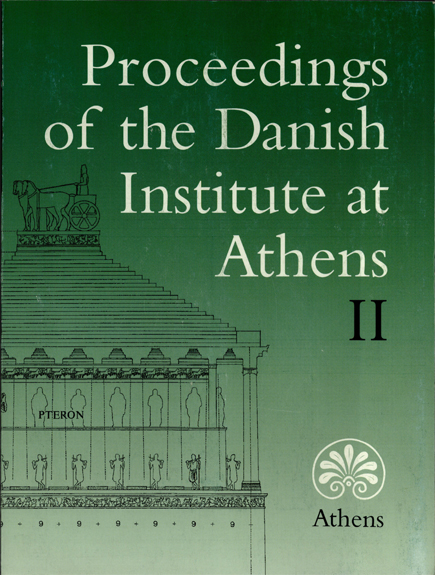The Cyclades and the mainland in the shaft grave period - a summary
Keywords:
Mycenae, graves, tombs, Cyclades, late-minoan period, trade relationsAbstract
It is usual to consider the main economic, social and artistic trends in early Mycenaean society as demonstrated in the Shaft Graves of Mycenae
to be derived more o rless directly from Crete. In this scenario, societies on the Cycladic islands fulfil the role ofsailors and ship owners procuring the one-sided delivery of ideas and goods from Crete to the Mainland. It is the claim of the present article that the development of early
Mycenaean culture and society can only be explained as a rather long-termed process. It is shown that relations with the Cyclades, both in the Argolid and in Attica, were substantial during the formative phase of the Mycenaean society—during MHIII in Mainland terminology. During this time, when the first rich graves are found in Mycenae, Cretan influence is either non-existant or insignificant, on the Mainland as in the Cycladic islands. The suggested explanation is that Cretan societies had not yet recovered and Minoan foreign relations were not reestablished after the destruction of the Old Palaces. Cycladic ships, predominantly from Phylakopi in Melos, ensured the important supply of metals —probably from the lands of the Eastern Mediterranean.
Minoan influences are discernible again in full strength during the early part of LMIA and early LCI in the Cyclades. It was not until then that well known Minoanfeatures within the fields of architecture, wall-painting, pottery and communication systems were introduced on
the islands. Akrotiri on Thera - as the island under strongest influence from Crete (perhaps even a "colony") - became the leading Cycladic
island in trade relations with the surrounding world. On the Mainland this new trend was felt through import of Theran pottery alongside Minoan —butfirst of all through an increasing sophistication in metalwork and other fields of handicraft. In the years before the volcanic destruction of Thera, Mainland influences are felt strongly on Thera. It should be emphasized, however, that the new preeminent objects in Mycenae, in a newstyle, were most probably produced by Mainland craftsmen, inspired from Crete, working in a technology and tradition established 150 to 200 years earlier when Crete, the Cyclades and the Mainland enjoyed a flowering commercial and ideological (?) intercourse. Modes of exchange during the years of the later Shaft Graves and the "international spirit" prevailing the Aegean area during the most flourishing years of the New Palaces in Crete, cannot be explained by simple models. The Cyclades,however, hardly ever regained the political strength they enjoyed during the period of the earlier Shaft Graves.
Downloads
Published
How to Cite
Issue
Section
License
The authors and Proceedings of the Danish Institute at Athens own the copyright to the published articles and reviews.





